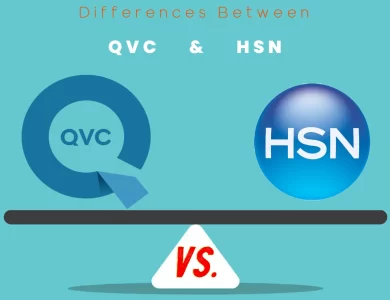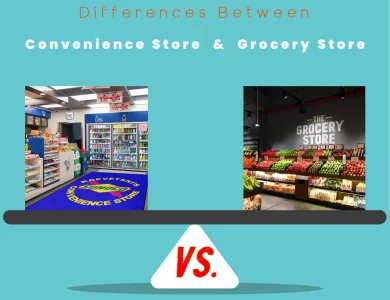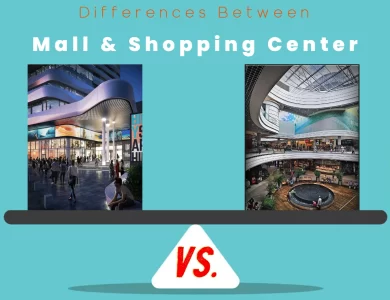
| Aspect | Black Friday | White Friday |
|---|---|---|
| Origins | Emerged in the US, tied to post-Thanksgiving | Originated in the Middle East, introduced by Souq.com |
| Timing | The day after American Thanksgiving | Around the same time as Black Friday, with flexibility |
| Medium | Brick-and-mortar stores | Online shopping platforms |
| Cultural Context | Global phenomenon | Strong regional appeal |
| Marketing | Doorbuster deals, limited-time offers | Online exclusivity, wide range of discounted items |
| Impact | Scenes of chaos, long lines, and rush | Convenience, reduced crowds, and online comfort |
| Strategies | Early bird approach, strategic in-person shopping | Digital savviness, online deal comparison |
| Emotional Experience | Adrenaline rush, camaraderie | Convenience, relaxed shopping atmosphere |
| Shopping Trends | Embracing in-store and online experience | Catalyst for e-commerce growth, reshaping retail |
| Sustainability | Environmental concerns, potential waste | Opportunity for sustainable choices, eco-friendly focus |
In the bustling arena of shopping, where tradition meets innovation and camaraderie mingles with convenience, the stories of Black Friday and White Friday unfold. From the dawn of time, well, at least since the 1960s, Black Friday has been etched into the American landscape, a post-Thanksgiving celebration marked by exhilarating discounts and heart-pounding shopping feats. Now, hold that thought and teleport to the Middle East, where White Friday enters the scene with a digital flourish. A brainchild of the online commerce titan Souq.com, White Friday reimagines the shopping extravaganza, offering a cybernetic haven of deals that you can explore from the comfort of your favorite armchair. Intrigued? Prepare to be captivated as we unravel the secrets, stories, and strategies that set these two titans apart. So, dear reader, if you’re as eager as we are to decipher the symphony of contrasts that define Black vs. White Friday, read on, and let the adventure begin!
Differences Between Black and White Friday
The main differences between Black Friday and White Friday lie in their origins, timing, shopping mediums, cultural contexts, and marketing strategies. While Black Friday emerged in the US as a brick-and-mortar event after Thanksgiving, White Friday originated in the Middle East as a digital alternative, introduced by Souq.com. Black Friday is traditionally held the day after Thanksgiving, marked by in-person shopping and doorbuster deals, while White Friday maintains flexibility in its timing and offers online-exclusive discounts. Black Friday’s global appeal contrasts with White Friday’s regional focus on the Middle East. Moreover, Black Friday employs competitive marketing with limited-time offers, while White Friday emphasizes convenience through online shopping platforms.
1. The Origins: Stories Behind the Names
Black Friday: A History of Contradictions
The origin of the term “Black Friday” is shrouded in a mix of urban legends and historical facts. Some stories trace it back to the 1960s when the term was first associated with the surge of shoppers and chaotic traffic that clogged the streets on the day after Thanksgiving in the United States. The term “black” was used to describe the financial boost that retailers experienced, shifting from being ‘in the red’ (indicating losses) to being ‘in the black’ (indicating profits). Over the years, Black Friday evolved from a local concept to a global shopping phenomenon.
White Friday: A Digital Innovation
White Friday, on the other hand, emerged from the sands of the Middle East, specifically in the United Arab Emirates. With a history that is relatively shorter than Black Friday, White Friday was introduced as an online shopping extravaganza by regional e-commerce giant Souq.com, now an Amazon company. This event was strategically placed to coincide with the American Black Friday, offering an alternative shopping experience for consumers who preferred the convenience of online shopping and were drawn to the concept of breathtaking discounts.
2. Timing is Everything: Date and Duration
Black Friday: The Day After Thanksgiving
Black Friday’s timing is deeply intertwined with the American Thanksgiving holiday, which falls on the fourth Thursday of November. Traditionally, Black Friday is celebrated on the day after Thanksgiving, marking the unofficial start of the holiday shopping season in the United States. Retailers open their doors early, often at dawn, to welcome hordes of eager shoppers who line up hours in advance to secure their spot in the deal frenzy. In recent years, the fervor has even led to some stores opening their doors on Thanksgiving evening itself.
White Friday: Flexible Festivities
White Friday, while initially designed to coincide with the American Black Friday, has exhibited a degree of flexibility in its timing. It typically takes place around the same time as Black Friday, but the specific dates can vary depending on the lunar calendar and the cultural context of the Middle East. This adaptability caters to a diverse range of customers and allows retailers to cater to different segments of the population.
3. Shopping Medium: Brick-and-Mortar vs. Online Realm
Black Friday: A Battlefield of Crowds
The essence of Black Friday is deeply rooted in the traditional brick-and-mortar shopping experience. Shoppers wake up at the crack of dawn, armed with shopping lists and an appetite for unbeatable bargains. They flock to shopping malls and retail stores, forming long lines and participating in a frenzy of in-person shopping. The adrenaline rush of competing with fellow shoppers for limited-time deals and doorbuster discounts has become an integral part of the Black Friday tradition.
White Friday: The Digital Frontier
White Friday’s distinctiveness lies in its digital DNA. Online retailers and e-commerce platforms capitalize on the convenience of the digital realm to bring consumers a shopping extravaganza that can be accessed from the comfort of their homes. The event has contributed to the growth of online shopping in the Middle East, encouraging consumers to embrace e-commerce for its ease of use and accessibility. This is particularly significant in a region where extreme weather conditions and cultural factors can sometimes hinder physical shopping expeditions.
4. Cultural Context: Global vs. Regional Appeal
Black Friday: A Global Phenomenon
Black Friday has transcended its American roots to become a global shopping sensation. From Europe to Asia, retailers across the world have adopted the concept, offering discounts and deals to attract consumers seeking the thrill of bargain hunting. The global appeal of Black Friday has led to a harmonization of shopping experiences, with consumers from different cultures sharing in the excitement of the event.
White Friday: Catering to Regional Tastes
White Friday, while gaining traction beyond its Middle Eastern birthplace, retains a stronger regional flavor. The event resonates with consumers in the Gulf Cooperation Council (GCC) countries and neighboring regions, where the concept of mega sales aligns with local shopping habits and preferences. The event’s cultural resonance has contributed to its enduring popularity in the region, serving as a cultural bridge between traditional shopping practices and the digital age.
5. Marketing Strategies: Deals and Discounts
Black Friday: Doorbusters and Limited-Time Offers
Black Friday is synonymous with jaw-dropping deals and limited-time offers that create a sense of urgency among shoppers. Retailers entice customers with doorbuster discounts on highly sought-after items, often in limited quantities. The allure of these deals drives shoppers to camp out in front of stores and brave the early morning cold to secure their chance at massive savings. The excitement of physically entering a store and hunting for the best deals is a central aspect of the Black Friday experience.
White Friday: Online Exclusive Extravaganza
White Friday’s marketing strategy revolves around online exclusivity. E-commerce platforms offer a wide range of products at heavily discounted prices, encouraging consumers to fill up their virtual carts with items that can be conveniently ordered and delivered to their doorstep. The allure of White Friday lies in its accessibility and convenience, allowing shoppers to explore a plethora of deals without leaving their homes.
6. Impact on Communities: Chaos vs. Convenience
Black Friday: Shopping Frenzy and Chaos
Black Friday’s reputation is accompanied by stories of chaos and, at times, even incidents of unruly behavior among shoppers. The scenes of crowded stores, long lines, and people rushing to grab the last items off the shelves have become emblematic of the event. While the excitement is palpable, it also raises questions about the societal impacts of excessive consumerism and the toll it takes on retail employees who must work long hours during the holiday season.
White Friday: Redefining Shopping Comfort
White Friday distinguishes itself by offering a more relaxed and convenient shopping experience. The online nature of the event eliminates the need for shoppers to physically contend with crowds and long lines. This convenience aligns with modern lifestyles and reflects a shift in consumer preferences towards seamless and hassle-free shopping experiences.
7. The Hunt for Deals: Strategies and Tactics
Black Friday: Battle of the Early Birds
Black Friday is renowned for its competitive atmosphere, where shoppers adopt various strategies to secure the best deals. The early bird approach is a common tactic, with many consumers braving the early morning hours to be among the first in line when stores open. Others meticulously research deals in advance, creating shopping lists and store routes to maximize efficiency. This intense strategy-based approach adds an element of gamification to the experience, as shoppers strategize to outwit competitors and snag coveted items before they disappear from the shelves.
White Friday: Digital Savviness
White Friday’s shopping strategy takes a different form in the digital landscape. Shoppers employ their digital savviness to browse through online platforms, compare prices, and add items to their virtual carts. The ability to browse and compare deals across different websites empowers consumers to make informed purchasing decisions. While the competitive aspect may be less pronounced compared to the in-person frenzy of Black Friday, White Friday’s strategic element lies in navigating online platforms efficiently and leveraging technology to score the best deals.
8. Emotional Experience: Thrill vs. Convenience
Black Friday: Adrenaline Rush and Camaraderie
Participating in Black Friday often evokes a rush of adrenaline and excitement. The thrill of physically entering a store, exploring aisles filled with discounted products, and joining a crowd of enthusiastic shoppers creates a sense of camaraderie and shared experience. The competitive nature of Black Friday fosters a unique sense of community among shoppers who bond over their shared goal of finding unbeatable deals. This emotional aspect of the event turns shopping into an adventure, complete with challenges and triumphs.
White Friday: Convenience and Comfort
In contrast, White Friday offers a shopping experience centered around convenience and comfort. Shoppers can browse deals from the comfort of their couch, without the need to brave crowds or contend with physical exertion. This convenience appeals to consumers seeking a more relaxed shopping experience, where they can explore discounts at their own pace. While the emotional intensity of Black Friday may be absent, White Friday provides a tranquil alternative for those who prioritize ease and relaxation.
9. Shopping Trends: Physical vs. Digital Transformation
Black Friday: Preserving Tradition in the Digital Age
Despite the rising prominence of online shopping, Black Friday has managed to preserve its traditional brick-and-mortar essence. Many consumers still value the tactile experience of in-person shopping, where they can touch, try, and physically interact with products. This has led retailers to adopt an omnichannel approach, offering both in-store and online deals to cater to the preferences of diverse shoppers. Black Friday’s ability to adapt and remain relevant while retaining its core attributes highlights its enduring appeal.
White Friday: Catalyst for E-commerce Growth
White Friday’s emergence has been a catalyst for the growth of e-commerce in the Middle East. The event showcased the potential of online shopping in a region where cultural and logistical factors had previously limited its expansion. As consumers embraced the convenience and accessibility of online deals, businesses responded by investing in e-commerce infrastructure and improving the overall online shopping experience. White Friday’s impact extends beyond a single event, as it contributed to reshaping the retail landscape in the Middle East.
10. Sustainability and Consumption
Black Friday: Consumerism and Environmental Concerns
The consumerist nature of Black Friday has drawn criticism for promoting excessive consumption and contributing to environmental issues. The frenzied shopping spree often results in increased waste, as shoppers purchase items they may not necessarily need. This aspect has prompted discussions about the environmental impact of the event and has led some consumers to seek alternatives that align with their values.
White Friday: Potential for Sustainable Choices
White Friday, while not exempt from consumption, offers opportunities for more sustainable choices. The online nature of the event reduces the immediate impact on physical resources, and consumers can make conscious decisions about their purchases without the pressure of in-store urgency. Additionally, some e-commerce platforms highlight eco-friendly products and practices during White Friday, encouraging consumers to consider the environmental implications of their choices.
FAQs
The primary difference lies in their origins and shopping mediums. Black Friday began in the US as an in-person shopping extravaganza after Thanksgiving, while White Friday emerged in the Middle East as a digital event introduced by Souq.com, offering online-exclusive discounts.
Black Friday is typically observed the day after Thanksgiving, marking the start of the holiday shopping season, and often involves early morning store openings. White Friday aligns with the same time frame as Black Friday but maintains flexibility due to its reliance on the lunar calendar and regional context.
Black Friday has become a global phenomenon, transcending its American roots, and is celebrated by retailers worldwide. In contrast, White Friday maintains a stronger regional appeal, particularly in the Middle East and the Gulf Cooperation Council (GCC) countries.
Black Friday is known for its doorbuster deals and limited-time offers, often prompting shoppers to line up for discounts. White Friday, being a digital event, offers online exclusivity and encourages consumers to explore a wide range of discounted items from the comfort of their homes.
Absolutely. Black Friday evokes an adrenaline rush and a sense of camaraderie among shoppers competing for deals in-store. On the other hand, White Friday provides convenience and comfort, allowing shoppers to explore deals online at their own pace without the rush of crowds.
Black Friday has faced criticism for promoting excessive consumption and environmental concerns due to impulsive buying. White Friday, while not immune to consumption, offers an opportunity for more sustainable choices as shoppers can make conscious decisions while browsing deals online.
Certainly. The differences encompass their origins (US vs. Middle East), timing (day after Thanksgiving vs. flexible), shopping mediums (in-person vs. online), cultural context (global vs. regional), marketing strategies (doorbusters vs. online exclusivity), and emotional experiences (thrill vs. convenience). These distinctions contribute to the unique appeal of each event.
Your choice depends on your shopping style. If you enjoy the excitement of in-person shopping and the competitive hunt for deals, Black Friday might be your go-to. On the other hand, if you prefer the ease of online browsing and the convenience of doorstep delivery, White Friday could be your perfect fit.
While sustainability efforts vary, White Friday may offer a more conscious shopping experience due to its online nature, enabling shoppers to make informed decisions and reducing immediate waste associated with in-store shopping sprees.
Black Friday has expanded from a US tradition to a global phenomenon, influencing shopping habits around the world. White Friday, introduced more recently, has fueled e-commerce growth in the Middle East, revolutionizing online shopping practices and reshaping the regional retail landscape.
Read More:
Contents
- Differences Between Black and White Friday
- 1. The Origins: Stories Behind the Names
- 2. Timing is Everything: Date and Duration
- 3. Shopping Medium: Brick-and-Mortar vs. Online Realm
- 4. Cultural Context: Global vs. Regional Appeal
- 5. Marketing Strategies: Deals and Discounts
- 6. Impact on Communities: Chaos vs. Convenience
- 7. The Hunt for Deals: Strategies and Tactics
- 8. Emotional Experience: Thrill vs. Convenience
- 9. Shopping Trends: Physical vs. Digital Transformation
- 10. Sustainability and Consumption
- FAQs






